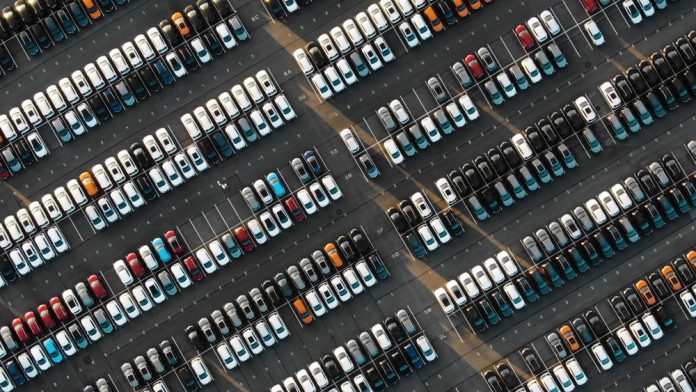New car supply dipped slightly in July as improved manufacturing, higher demand and ongoing scarcity allowed dealers to sell more vehicles at higher prices.
According to a Cox Automotive report, dealership inventories shrank roughly 1% from the previous month but grew 71% from last year, when new car supply was heavily constrained by production shutdowns and limited resources. By the end of July, retailers held 1.96 million vehicles in stock, down from June’s 1.98 million. While availability varied significantly between brands and models, the average days’ supply for the period was identical to June, resting at 56 days. Electric vehicles continued to pile up on dealership lots, despite a nominal decline in inventory. The EV segment has outpaced others in terms of production and, at 100 days, ended the month with nearly double the average days’ supply.
While vehicle inventories did shrink, retailers and OEMs remained busy throughout July. Sales continued to gain momentum under better availability and pent-up demand, rising 15% year-over-year. Car dealers also profited from strong pricing. Average transaction prices (ATP) dropped only 0.7% from June to $48,334. Although ATP has declined 2.7% since the start of the year, vehicles cost significantly more now than before the COVID pandemic. Even though new car supply has grown, it remains far behind pre-2020 norms, a factor that has created scarcity, increased prices and buoyed profit margins.
However, while 2023 is proving to be a successful year for manufacturers and retailers, the remaining four months could see the car market begin to cool. Affordability has become a critical issue facing the automotive industry and continues to block many mass-market buyers from returning to dealership showrooms. Since 2020, dealerships and OEMs have supplemented reduced sales from subprime shoppers thanks to an influx of luxury and fleet clients. But while these two segments have grown under the effects of pent-up demand, the surge can only last so long. Should premium and fleet sales stagnate, an increase in new car supply would be necessary to lower prices and bring shoppers back, at the risk of affecting profit margins. As the year progresses, this solution may be used to counteract diminishing demand across all segments; something car dealers should be prepared to face, however disappointing.



